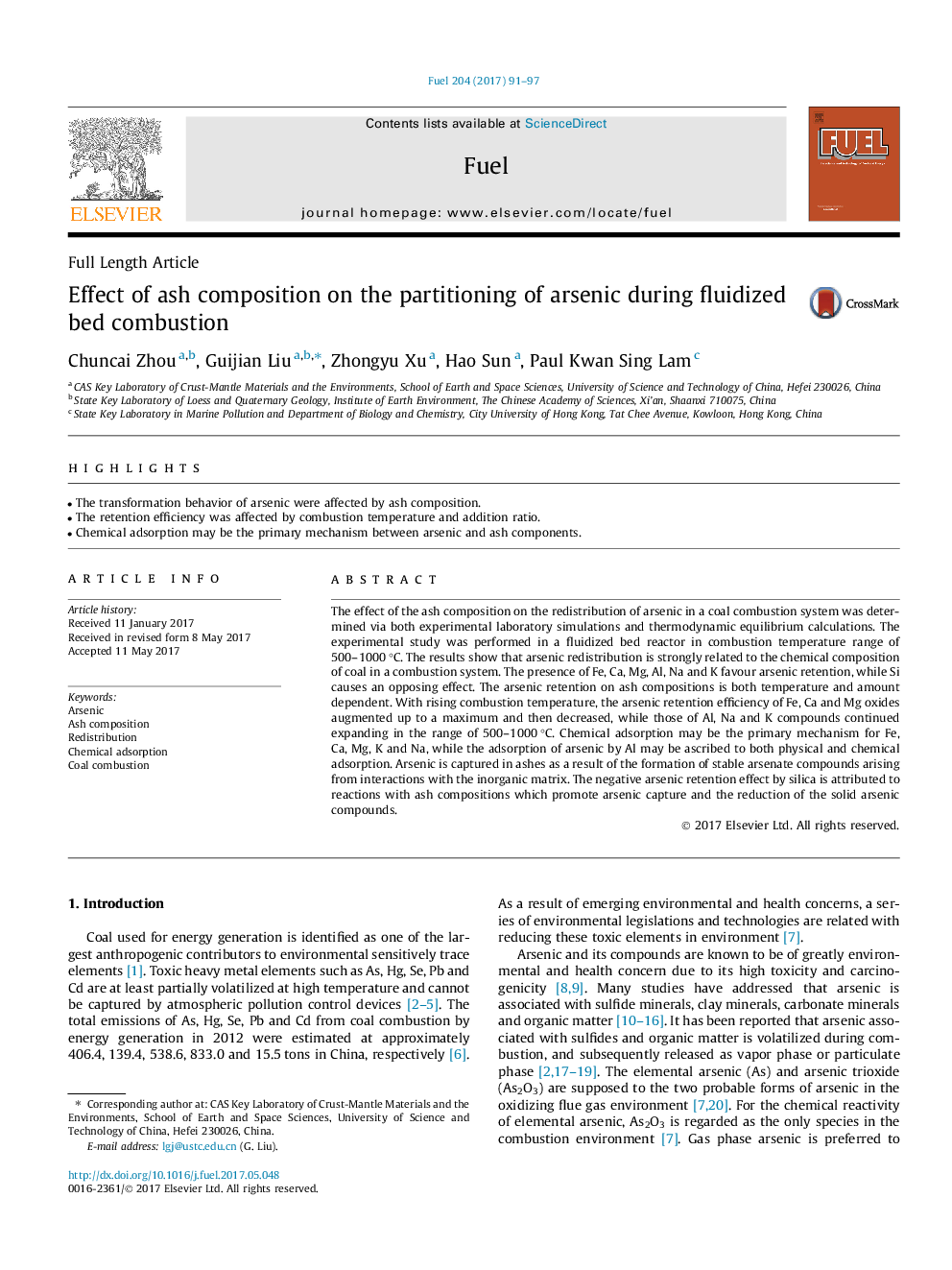| Article ID | Journal | Published Year | Pages | File Type |
|---|---|---|---|---|
| 4768656 | Fuel | 2017 | 7 Pages |
Abstract
The effect of the ash composition on the redistribution of arsenic in a coal combustion system was determined via both experimental laboratory simulations and thermodynamic equilibrium calculations. The experimental study was performed in a fluidized bed reactor in combustion temperature range of 500-1000 °C. The results show that arsenic redistribution is strongly related to the chemical composition of coal in a combustion system. The presence of Fe, Ca, Mg, Al, Na and K favour arsenic retention, while Si causes an opposing effect. The arsenic retention on ash compositions is both temperature and amount dependent. With rising combustion temperature, the arsenic retention efficiency of Fe, Ca and Mg oxides augmented up to a maximum and then decreased, while those of Al, Na and K compounds continued expanding in the range of 500-1000 °C. Chemical adsorption may be the primary mechanism for Fe, Ca, Mg, K and Na, while the adsorption of arsenic by Al may be ascribed to both physical and chemical adsorption. Arsenic is captured in ashes as a result of the formation of stable arsenate compounds arising from interactions with the inorganic matrix. The negative arsenic retention effect by silica is attributed to reactions with ash compositions which promote arsenic capture and the reduction of the solid arsenic compounds.
Related Topics
Physical Sciences and Engineering
Chemical Engineering
Chemical Engineering (General)
Authors
Chuncai Zhou, Guijian Liu, Zhongyu Xu, Hao Sun, Paul Kwan Sing Lam,
